| |
| 首页 淘股吧 股票涨跌实时统计 涨停板选股 股票入门 股票书籍 股票问答 分时图选股 跌停板选股 K线图选股 成交量选股 [平安银行] |
| 股市论谈 均线选股 趋势线选股 筹码理论 波浪理论 缠论 MACD指标 KDJ指标 BOLL指标 RSI指标 炒股基础知识 炒股故事 |
| 商业财经 科技知识 汽车百科 工程技术 自然科学 家居生活 设计艺术 财经视频 游戏-- |
| 天天财汇 -> 工程技术 -> 安检机上标着 Film Safe,对胶卷真的安全吗? -> 正文阅读 |
|
|
[工程技术]安检机上标着 Film Safe,对胶卷真的安全吗? |
| [收藏本文] 【下载本文】 |
|
Google 了一下找到了这篇文章:你真的相信“胶卷安全”?还不如信城管... 如果真的不安全的话,为什么标着 Film Safe 呢? |
|
不安全。 胶片时代,我长期携带大量胶片各处飞,安检时必须要求手检。对于大中型机场来说,手检胶片司空见惯,但一些小机场对此不熟悉,需要解释说明一番,最终都会同意手检,没有遇到拒绝的。 为了加快手检速度,提前要准备好一个所携带胶片的明室模型,用于给安检员说明胶片盒内的组成和结构,以及打开步骤。另外需要自备一个尺寸大一些的双人暗袋,这种暗袋有4个袖套,可以让两个人双手伸入暗袋。提醒安检员,在我说可以之前,不能擅自从暗袋抽离胳膊。然后,我和安检员同时伸胳膊进暗袋,我打开胶片,每一步都让他用手摸检查。完成后,我在暗袋内重新封闭好胶片,告诉安检员可以抽手了,他再抽离双手。 手检通常都是在一个小屋子里,手检的人常常是某位小领导。一般会先对胶片外包装进行一下防爆检测,就是拿块胶布四处粘粘。有几次还牵来了缉毒犬先闻闻。多数情况,安检员会在一堆胶片中随机抽查一部分。但遇到开会等情况,安检员会逐一检查,所以时间一定要留足。 |
|
安检对于未拍摄和拍摄完成未冲洗的卷影响是完全相同的。对已经冲洗完成的底片没有影响。 地铁安检、手提行李安检、大部分陆运快递影响较小。就是所谓FILM SAFE。“safe”的意思是对正常曝光且不迫冲的胶片不造成可见影响,并不是没影响。ISO400的卷拍摄欠曝1档以上,或者空片,可以看到明显的X光影响,safe的安检机也一样。400以下基本可以忽略。(有些新技术的安检机对400的卷也可以做到safe,但并不普及) 但是ISO800、1600、3200的卷(包括迫冲到800、1600、3200的卷,push到多少你的卷就变成了多少感光度),啥安检仪都有影响,过的次数越多影响越严重,最好套铅袋寄。 然鹅,买胶卷的时候是基本不能避免安检的,所以,高感的胶卷现在很难。 铅袋作用:杜马克的铅袋确实有作用,因为过安检仪时可以看到套铅袋和不套铅袋回波颜色是不同的(具体技术原理要问技术相关答主)。另外蓝色的特别重的那种医用铅袋是效果最好的,至少手提行李安检回波是纯黑的。不过托运行李尤其国际航班最好别用蓝色医用的,用个杜马克就好了(因为它的设计就是为了让安检仪能看清东西的形状),不然有可能会拆箱检查,把内容物掏出来过安检。我自己一般都是套杜马克放在随身行李,有的机场会要求开箱检查,就拿出来手检。 任何厚度的铅袋对CT安检都是无效的,比如约翰肯尼迪机场的CT安检,和某些重点机场的托运行李CT安检。疫情后国内机场国际到达的海关安检已经全部更换为CT安检(就是那种像医院CT机一样的大圆筒),而且海关没有手检的现象,只有套铅袋这一个选项。 锡纸和牛皮纸袋:82号元素——铅才能屏蔽X光。锡箔纸、铝箔纸没有任何作用,不然核反应堆的外壳用铝就可以了。那种牛皮纸袋确实只是装相纸用的避光袋,不防X光,可能纸袋上面都会贴No X-ray标识,所以…总之是个美丽的误会。它避光效果是很好的,装个拍好待冲的4x5、810啥的没问题。 |

|
|
TB图 侵删 |
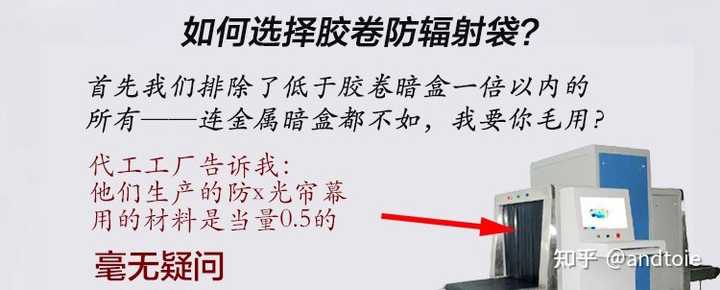
|
|
TB图 侵删 快递方面:目前尤其国内买胶卷发快递基本很难避免安检,有的商家在快递盒子上贴No X-ray的贴纸,我觉得没有哪家快递公司敢冒查封停业整顿的风险,不过安检机。 总的来说,顺F,京D,德B这样的全自营快递的陆运服务,安检机X光强度相对较低,应该都是film safe的。可能他们的设备采购型号都比较统一。 快递的主要不可控方面在于,1加盟商快递的安检机型号可能不同(不过一般出于工作人员健康,应该不会选择射线强度很高的机器)。2某些重大活动期间出于安全考虑有可能会加强X光(道听途说)。3四通一达的某些热门线路(比如京沪)的小件是默认走空运的,运费并不多收,也不做特别说明。 另外有的店家其实很贴心的和快递有不过安检协议。但,科技发展到今天,很多快递的转运仓都是智能化流水线分拣,无人化操作了,恐怕很难因为某个协议会把单个快件从流水线上拿下来(比如一个快递超期太多,你心急想去转运中心自提,一般得到的回复都是:你来了也拿不到,因为件都在流水线上没分拨,根本不可能找出来。)。假设在签约省份可以做到全程无X光,到了目的地省份是否还会同样执行,应该是问号。除非未来某些头部快递企业可以开通付费的全程无X光服务。 机场方面:目前走过的国内大部分机场都可以配合手检,尤其东部沿海城市。 成片影响:至于X光影响是否肉眼可见。还跟扫描仪有关,哈苏X1,X5,爱普生平扫,飞思翻拍,数码相机翻拍这种数字化流程,如果有影响是很容易分辨的。 具体影响基本和柯达文档差不多。这个文档里的测试场景是机场托运行李安检。 |
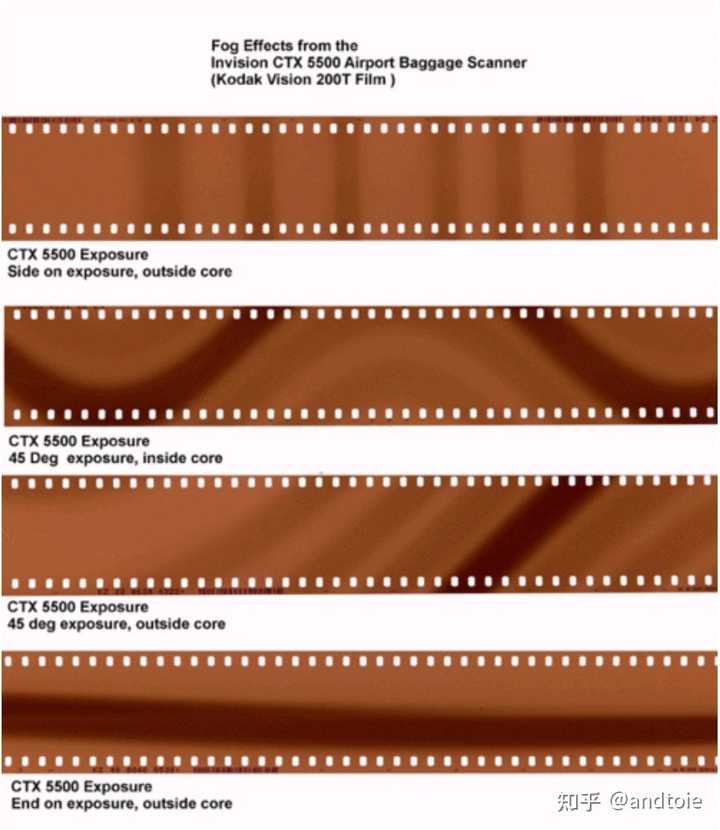
|
|
|
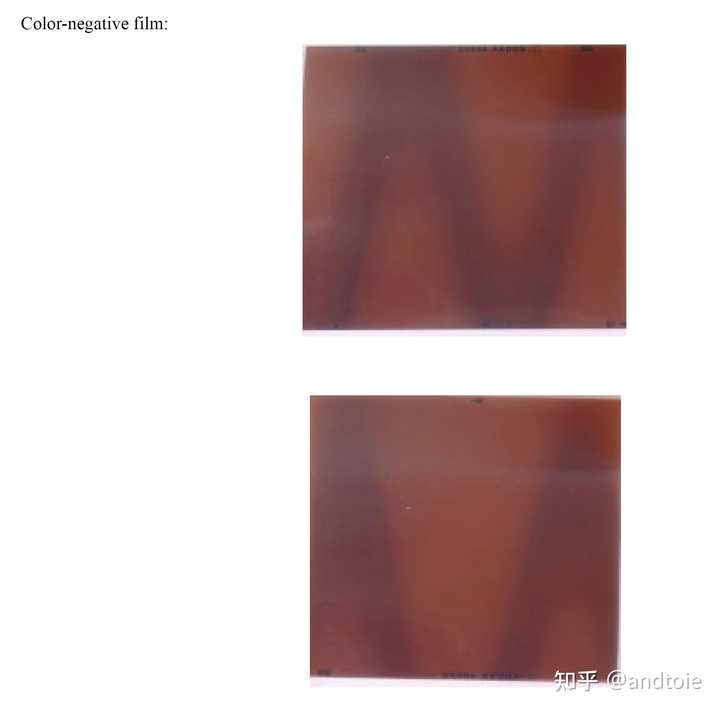
|
|
|
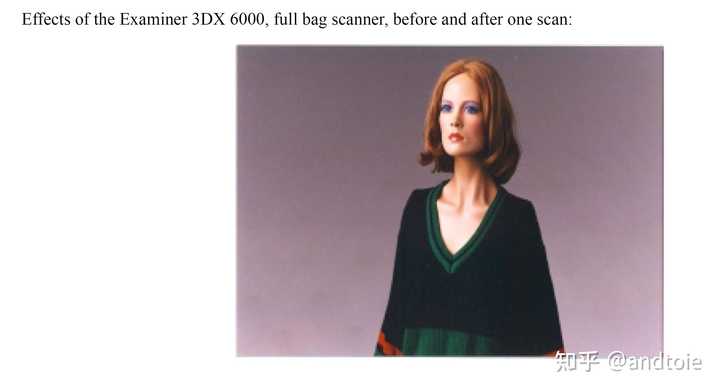
|
|
|

|
|
|

|
|
|
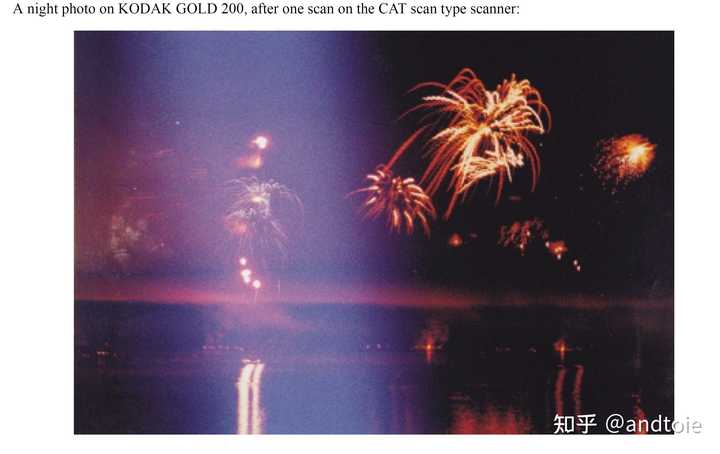
|
|
|
|
我用真实案例来告诉你们。这卷是柯达tmax3200。ISO越高,安检机的效果就越明显。所以这里用ISO3200(迫)来举例。 |
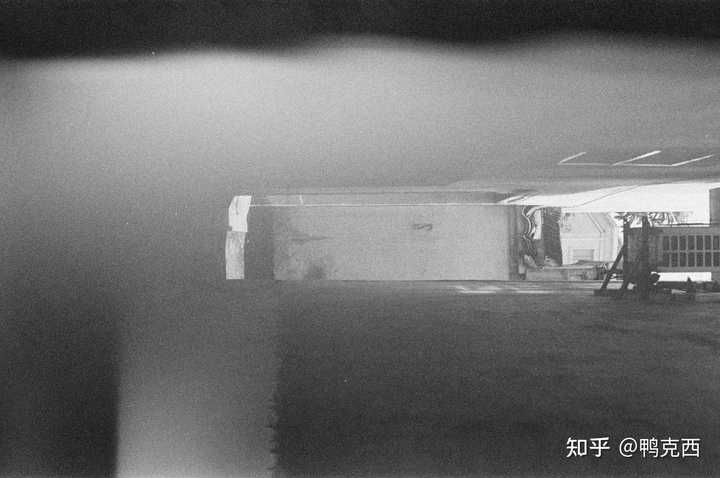
|
|
|
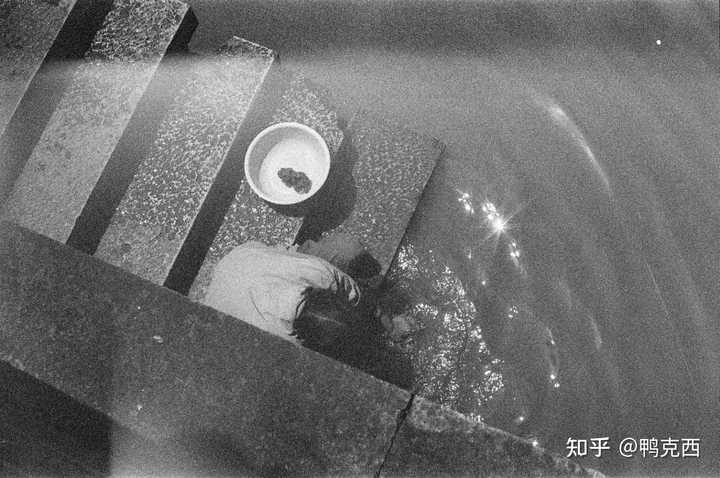
|
|
这卷就是进过了filmsafe的安检机的胶卷,除了竖条带胶卷壳上的毛阴影的是我机器的漏光以外,其他的漏光部分就是安检机的杰作。 filmsafe 的安检机在3200的胶卷上的效果是这个程度。那么在800,400,200,100的胶卷上的影响一定是成倍减轻的。 但不是没有影响。 具体程度你可以想象下这个亮度的成倍减少。直到在iso100-200的卷上,可能肉眼已经不太分辨的出。即使这样,我想你们也不会愿意让胶卷过任何安检机的,对吧? |
|
没一个靠谱的回答。 这问题在douban上都不要不要了… 先说结论。 1、随身行李与托运行李安检仪是两个不同的东西 2、随身行李只要贴Film Safe,(对于你现在还能买的到的胶卷)安全,是“不会造成任何可见影响”的。 3、托运行李检查,对任何胶卷都有害。 不用质疑,因为这是【Kodak的官方文档】,比任何第三方论坛的讨论更具有可信性。 参见: Baggage X-ray Scanning Effects on Film -------------这是详细的原文------------------ X-ray equipment used to inspect carry-on baggage uses a very low level of x-radiation that will not cause noticeable damage to most films. However, baggage that is checked (loaded on the planes as cargo) often goes through equipment with higher energy X rays. 用来检查随身携带行李的X光设备使用能量非常低的X射线,对多数底片而言并不会产生可被察觉的损害。然而,托运行李常常会通过高能X射线检查设备。 There are two types of higher-dose scanners. The first type is similar to a hospital CAT scan and uses a low-dose scan followed by a higher-dose scan on specific areas of the baggage. The second type gives a high-dose, full bag scan on the first pass, damaging the film immediately. 有两种高能X扫描设备,一种和医用CAT设备类似,使用低能X射线先行扫描,并使用高能射线对行李特定区域进行扫描。第二种则是一开始就使用高能射线对包裹进行完整扫描,这将直接导致胶片受损。 Tests indicate that there is significant fogging of unprocessed film when the film sustains a direct hit by either of the different scanner's high-intensity X-ray beam. Faster films show a more dense fog. 研究表明对于未冲洗的底片而言,不管通过上述哪种(托运行李检查)设备,只要受到高能X光直接照射,就会形成明显的灰雾。ISO速度越高受到影响越大。 ------------------再次的分割线---------------- 搞不清楚随身行李与托运行李的,那是智商问题… |
|
不安全 别过。【认真脸 「Film Safe」一般只适用于低感胶卷,高感<虽然我知道1600以上的胶卷很少有>胶卷很容易受到威胁。 反复通过微弱辐射对胶卷内部可能也有影响。 珍爱胶片,还是请人员手检吧。 ——相关描述参见《Film Is Not Dead》 |
|
每天包里都有胶片在过地铁安检 5207 5222 5219之类的电影卷 有开封的和未开封的 拍和未拍的 没有发现任何影响 |
|
上海地铁3号线放背包来回扫了一两个月,照片还是冲扫出来了,个人觉着没什么影响,但可能是我人品比较好,不然有得说照片没拍好是安检机给我祸害的。当然,如果是你要参加国际大赛的作品最好还是小心保管的好,万一扫坏了多作孽。 |
|
过安检可以把胶卷单独拿出来人工目视检测过关。 从来没有被拒绝过。 |
|
照这篇文章的说法,做过试验的 另外,请避开托运安检机 How Safe is film Airport X-ray Scanners How Safe is film Airport X-ray Scanners In 1994 the National Association of Photographic Manufacturers in the USA (NAPM) conducted an extensive study - in conjunction with the country's civil aviation body, the FAA (Federal Aviation Agency) - on the effects of X-ray scanning on photographic Film. Testing was conducted at the FAA's Technical Center in Atlantic City (New Jersey) using machines identical to those in all FAA-controlled airports in the USA and representative of models installed in all the world's major international airports. The NAPM tests were conducted in co-operation with Kodak, Fuji, Agfa, Konica, Ilford and 3M who each supplied 500 rolls of 35mm film -- color negative, color reversal and B&W - ranging in speed from ISO 50 to 1600. These were then grouped in batches that received one, four, 16 or 100 X-ray inspections at the FAA prescribed dosage of no more than one milliroentgen. In the USA this is the maximum dose permitted and FAA regulations demand that passengers be warned if a scanning machine emits more radiation during a single pass. In addition to testing for the cumulative effects of multiple X-ray scans, and the increased susceptibility to damage of faster films, the NAPM study was also designed to show whether the arrangement and orientation of 35mm cassettes could affect the way the film was irradiated. For example, in some tests the cassettes were arranged so the light traps were faced toward the X-ray source while in others the cassettes were stacked on top of each other so they would create 'shadows’ on those below. Films were also pushed and pulled up to two stops in an effort to replicate what NAPM termed a worst case scenario; namely a professional photographer traveling through a number of airports carrying films of widely different speed ratings with all the cassettes closely packed in a container or bag. The test results indicated that, in the case of color transparency films rated between ISO 50 and 1600, up to 16 passes through the scanner didn't do any damage at all. After 100 scans only the highest speed emulsions exhibited some slight effects, and then only detectable in the D-Max areas. B&W films were similarly unaffected up to i6 scans even when pushed to ISO 3200. The findings on color negative emulsions showed that 16 X-ray inspections produced no discernible damage and, after 100 passes, it was still difficult to detect any damage, but that "discriminatingviewers" might be able to notice some slight effects in "demanding scenes". According to the Fuji representative who took part in the study, it was virtually impossible to see any evidence of X-ray damage even when a high speed film was subjected to the worst case scenario in terms of exposure and the way the cassettes were stacked and scanned. In the UK, a similar study by the British Photographer's Liaison Committee (a group of various industry and professional organizations) reported similar findings to NAPM. The UK tests involved 300 rolls of films from each of the major manufacturers,spanning speeds from ISO 50 to 3200. These were subjected to a maximum of 32 X-ray inspections in a scanner of the type used by the British Airports Authority (BAA) which operates the majority of the UK's major airports. The UK report concluded that no visible damage resulted from "routine hand baggage examination under normal traveling conditions. Clearing the Fog. There are many myths surrounding airport X-ray inspection equipment and it's easy for ignorance to lead to paranoia among photographers who regularly travel by commercial airliner. For example, while it is indeed possible to vary the dosage emitted by these machines, in the USA and a number of other countries, it is illegal to do so. Furthermore, it is not possible for the machine's operator to alter the dosage during an inspection pass because these settings are concealed inside the unit and cannot be accessed during normal operation. It also needs to be understood that these modern machines are X-ray scanners and so the object is inspected line-by-line by a small and precisely controlled fan like emission of radiation. Only this line - which represents a very small area, even of an object as small as a 35mm cassette - receives a dose of X-rays at any one time. Another misconception is that an object is scanned continuously so, when the conveyor belt is stopped so the display can be examined by the machine's operator, it will receive multiple dosages of radiation. In fact the X-ray signal is now amplified to create the display and the object does not receive multiple scans in order to maintain the picture. Once is sufficient. One of the problems with older equipment was that poor amplification of the X-ray signal meant it was necessary to use a much higher dosage in order to obtain a good image. The preceding discussion applies to film examined through normal security area x-ray machines used to scan hand carried baggage. Film checked through as checked baggage is a different matter altogether. Many airports now require baggage that contains cameras to go through a special scanning device and this will definitely fog your film. The dosage is sufficient to fog all film not just faster speed film. If you fail to tell the check in operator that the checked baggage contains camera equipment, it will be scanned and if devices similar to cameras are identified, the baggage will be pulled (and you potentially along with it) for additional inspection. Bottom Line 1. Carry your film in carryon luggage 2. I personally put it in lead bags 3. If necessary ask for hand inspection 4. Do NOT check film through 5. Declare all luggage containing camera equipment as such 6. Be polite and helpful; being aggressive may mean you get detained and potentially bumped from the flight http://7.In these times of heightened security be aware that the security people are trying to save lives.5 |
|
我用的卷都是ISO400以下的(400较多) 我的胶卷基本上都是和随身行李一起过的 一般不单独拿出来 洗出来都很正常没问题的 就连拍立得的iso800相纸我都从来没拿出来过 拍出来也都没问题的 上次去美国带了很多卷 东部西部都去了 坐了四次飞机(不算转机)这是有史以来单次旅程过安检最多的一次 包里胶卷 拍立得都有 最后一共拍了十几卷回去洗出来看没啥问题 都挺好的 所以放心过吧 没事儿的 没网上说的那么可怕 不过ISO800以上还是小心些为好 可以让安检人员手检 |
|
我觉得这个问题比较类似”食品包装上标着QS,对人体真的安全吗?“ |
|
20多年前就已经是被大家诟病的一个话题了。直接回答,胶卷的话,手检。 |
|
无数次拿着小带子,中带子,大带子,红带子,绿带子。。。从安检机过,一点问题也没有。 刚开始也担心过呢,不过老摄像拍着肩膀告诉我没问题,我想应该没啥事吧。 但是除了过安检,我们也别无选择,只能这么坚信下去了吧。 |
|
现在安检门采用的是弱磁场发射技术,对心脏起博器佩带者、孕妇、软盘、录像带等无害。这个你放心,安检门原理你可以到网站http://www.xstaj.com了解,上面有安检门工作原理的文章,你可以详细的看下! |
|
|
| [收藏本文] 【下载本文】 |
| 上一篇文章 下一篇文章 查看所有文章 |
|
|
|
| 股票涨跌实时统计 涨停板选股 分时图选股 跌停板选股 K线图选股 成交量选股 均线选股 趋势线选股 筹码理论 波浪理论 缠论 MACD指标 KDJ指标 BOLL指标 RSI指标 炒股基础知识 炒股故事 |
| 网站联系: qq:121756557 email:121756557@qq.com 天天财汇 |